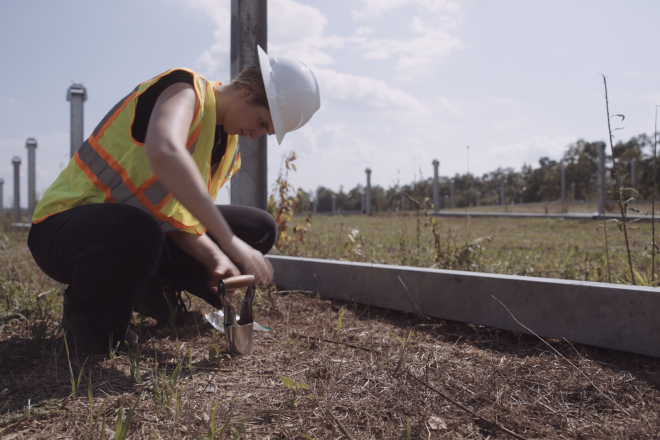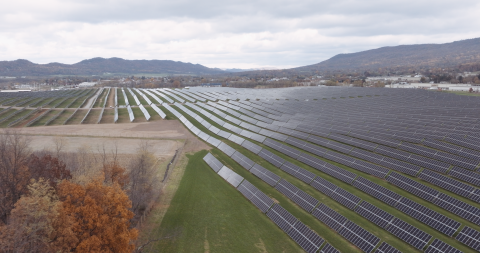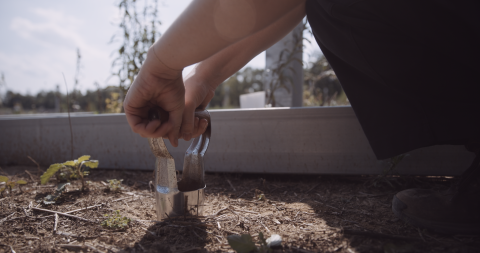The soils beneath the solar fields
How do solar farms impact soil health? It's a question that Penn master's student Hannah Winn is exploring at the central Pennsylvania site where solar energy production is helping Penn progress toward carbon neutrality.

By Katherine Unger Baillie
Solar fields are designed to channel one of our planet’s resources—sunlight—into energy. But these arrays sit atop yet another valuable resource: soil. Over the last year, Penn master’s student Hannah Winn has been posing the question, what happens to soil health following construction of a solar array?
The question is timely, as Penn is on the cusp of a new energy era. Starting this year, solar energy from a solar project in central Pennsylvania will meet roughly 70% of the University’s electrical demand, enabling the University to move a solid step closer to its goal of carbon neutrality by 2042. As part of the project, energy company AES, which developed the project, is supporting renewable energy research at Penn.
“It’s been super eye-opening to go to the solar farms,” Winn says. “In school everything is pretty theoretical, so to actually stand there in the solar facility and learn about the logistics involved, see how many people are involved in a long-term project like this, has been personally very impactful.”

Winn’s project emerged from this partnership. Her advisor, Professor Alain Plante of the Department of Earth and Environmental Sciences, developed a proposal for the research in collaboration with AES’ Sustainability and Impact team.
“Any land use involves a tradeoff,” says Plante. “Some renewable energy installations may be going into areas where we’re giving up good land for food production. Here, AES was interested in knowing, in addition to the installation itself, whether the soil beneath these panels could be sequestering carbon, offering a potential co-benefit to the solar energy production.”
The work appealed to Winn, who has a background in landscape architecture and an interest in environmental policy. Starting last spring, Winn has made multiple trips to one of the solar fields, known as Great Cove 2, in Pennsylvania’s Franklin County to take soil samples and collect other information about the landscape. AES consultants had previously taken baseline soil samples to record the biological, chemical, and physical properties of the fields prior to construction, and Winn’s samples will provide a look at the soil condition in various phases of the solar field’s construction and operation.

As she writes her master’s capstone this spring, Winn will be outlining best management practices for solar arrays that could boost the carbon retained in soil, an outcome that could not only reduce greenhouse gas emissions associated with solar facilities, but may also better preserve the land for future agricultural use.
“Soil is important for everything: for agriculture, for building, for food,” says Winn. “with this research project we’re looking at not only what happens when we put solar projects on soil, but also considering what happens when we leave.”
With society increasingly turning to renewable energy sources like solar to replace fossil fuels, studies like Winn’s will help grant a holistic understanding of impacts to the land and ecosystems, charting a path toward accelerating the benefits of clean energy projects and a more sustainable future.